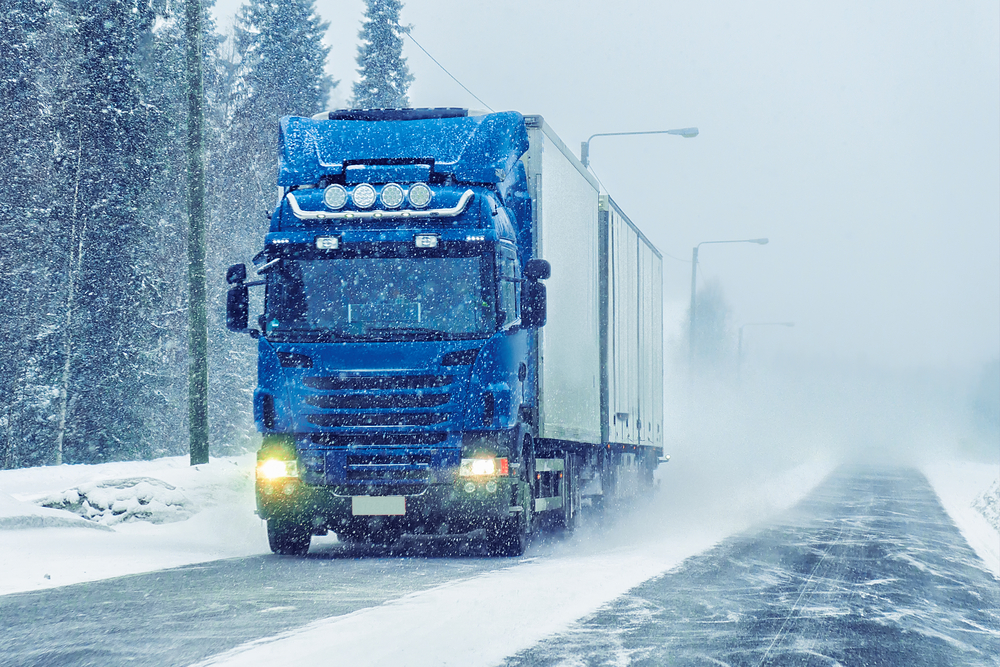The winter months often mean more dangerous roads for everyone. If you drive on the highway, you might encounter a lot of semi-trucks. Even in parts of the country that don’t ordinarily see heavy snowfall, the roads can get icy and slick.
Worse, drivers in warmer climates aren’t always accustomed to driving in winter weather, and this can lead them to underestimate just how dangerous the roads can be. The National Highway Traffic Safety Administration (NHTSA) offers some guidelines for staying as safe as possible on the highway through the winter months. If you have been involved in any type of car wreck or truck accident in Texas, it’s in your best interest to speak with a Dallas truck accident lawyer to protect your rights and review all of your legal options.
Prepare Your Car for Winter
Even if you don’t live in an area that requires snow tires, it’s still important to get your car thoroughly checked out before the cooler weather hits. Take your vehicle to a mechanic and have them look it over, checking for fluids that need to be topped off, as well as tires that might need to be replaced. It’s also a good idea to get an oil change before bad weather sets in.
Your mechanic can also check to make sure all of your exterior lights are working and can replace any lights that have burned out. Ask your mechanic to check for leaks in your car’s cooling system, and make sure your vehicle has enough coolant before you drive. You should also ensure that you have enough windshield washer fluid in your car’s reservoir, as this can help you clear ice and snow from your windshield.
Check for Recalls
Many people are unaware that cars are frequently subject to recalls. Auto manufacturers have an obligation to notify car owners when a part is defective or something needs to be serviced or replaced on a vehicle.
If you bought your car used, or you moved since you purchased your vehicle, you might not receive notification of recalls in the mail. This possibility is why it’s important to check the NHTSA website on a regular basis. You can find recall information for your specific vehicle. If your car has been recalled, the manufacturer must repair it at no cost to you.
Be Familiar with Your Vehicle
Are you driving a new car? Or is this winter the first time you’ve handled your car in the snow and ice? Maybe you moved, and you’re not used to driving in hazardous winter conditions.
Now is the time to familiarize yourself with your vehicle. Some experts suggest taking your car for a drive on back roads or a residential neighborhood with slower speed limits. If you do this when the first snow starts falling, you can learn how your car handles in the ice and snow without worrying about being on the highway or traveling at high speeds.
Be Prepared for Emergencies
You never know when you’ll need to stay in your vehicle until help arrives. This is why it’s important to stock your car with enough supplies and emergency equipment to keep you safe. The NHTSA suggests creating an emergency supply kit that contains a snow shovel, broom or ice scraper. You should also have some kind of abrasive material, such as cat litter, on hand in the event your car gets stuck in the snow and you need to create some friction for your tires.
Additionally, it’s a good idea to keep jumper cables, flares and a flashlight in your emergency kit. You should also include blankets and water, along with some snacks. Finally, make sure you have a cell phone charger and any medication you need to take on a regular basis.
If you get stuck on the side of the road in an emergency situation, the NHTSA says it’s important to stay with your vehicle and to avoid overexerting yourself. Instead of leaving your car, put flares or markers around it so other vehicles can see you. Doing this will also help the police or emergency workers find your vehicle.
It’s also important to avoid running your car for extended periods of time, as this can increase the danger of carbon monoxide poisoning. Instead, run your car sporadically if you need to keep warm, and crack your window to make sure you get enough fresh air.
Plan Your Route Ahead of Time
It’s also a good idea to know your route before you leave the house. You should never attempt to plan your route with a GPS as you drive, as this can lead to distractions that increase your risk of being involved in a car accident. Leave with enough time to reach your destination without rushing in winter weather. It’s better to be late than to be involved in a car accident.
The NHTSA also recommends letting other people know when you plan to arrive. This way they know you’re en route and can check in with you if they don’t hear from you at the time you’re supposed to reach your destination.
If you or a loved one have been involved in a truck accident, call Attorney Zach Herbert at Herbert & Eberstein today.
Media Contact:
Attorney Zach Herbert
T: (214) 414-3808
Follow Herbert & Eberstein on Facebook
Sources:

